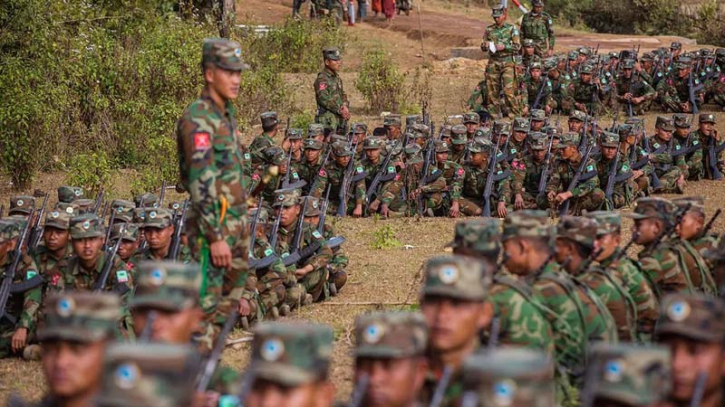When Myanmar’s Arakan Army fighters overwhelmed Paletwa on January 14, 2024, they weren’t simply adding another territorial notch to their belt – they captured a cornerstone of India’s strategic vision for Southeast Asia. Following eight weeks of intense clashes with Myanmar’s military junta, this victory highlighted the growing muscle of ethnic armed organizations across the troubled nation.
Paletwa’s Strategic Value Explained
Paletwa isn’t just another sleepy border town near Bangladesh’s Chittagong Hill Tracts. It represents a critical junction in India’s sprawling Kaladan Multi-Modal Transit Transport Project – an infrastructural behemoth that has already swallowed up approximately ₹3,200 crore since its inception in 2008.
This ambitious network aims to link Kolkata’s bustling port to Myanmar’s coastal Sittwe, then navigate up the Kaladan River to reach Paletwa, before finally connecting via roadways to Mizoram in India’s northeast. For New Delhi’s policymakers, this represents:
- – A maritime lifeline for the geographically isolated northeastern states.
- – A strategic alternative to the precarious “Chicken’s Neck” corridor that could be severed in a conflict.
- – Fresh commercial gateways for the resource-rich but economically underperforming northeastern region.
- – A counterbalance to Beijing’s growing economic footprint in the region.
Development Dreams Interrupted
The project had been gaining genuine momentum before the AA’s takeover. By May 2023, India had ceremoniously launched cargo operations between Kolkata and Sittwe with considerable fanfare. The Indian highway segment stood at 98% completion, while Myanmar authorities reported steady progress linking Paletwa to Zorinpui on the Indian border.
Then came the Arakan Army’s lightning offensive, capturing two dozen military installations and the headquarters of Light Infantry Battalion 289. This coordinated assault formed part of the broader “Operation 1027” – a systematic campaign by the AA and allied resistance groups, including the People’s Defence Force, methodically seizing strategic border towns since October 2023.
A Tangled Geopolitical Web
For Indian strategists, this situation presents a particularly thorny challenge:
- The Arakan Army’s selective targeting raises eyebrows – they’ve repeatedly disrupted Indian infrastructure while carefully avoiding Chinese investments, suggesting possible coordination with Beijing’s regional playbook.
- There’s lingering animosity from 2019, when joint India-Myanmar military operations against AA forces triggered retaliatory kidnappings of Indian construction workers.
- The contrasting approaches speak volumes – while India recently pledged support for railway connections to Chin State, China continues aggressively financing the Kyaukphyu Special Economic Zone in Rakhine state.
- India’s diplomatic stance grows increasingly awkward as its continued engagement with Myanmar’s military rulers alienates the opposition National Unity Government, complicating any potential dialogue.
Current Landscape (March 2025)
The situation continues evolving at a breathtaking pace. The AA has entrenched its authority throughout Paletwa and neighbouring districts, implementing governance structures that effectively sideline both the military junta and opposition forces. In a surprising twist, AA leadership has extended tentative olive branches regarding project continuation – albeit with renegotiated terms that would significantly expand their oversight and financial benefits.
Simultaneously, India has intensified its diplomatic outreach with Bangladesh and Thailand, seeking a coordinated regional response to Myanmar’s fractured political reality. Intelligence analysts have observed China’s methodical expansion of influence through strategic infrastructure investments in AA-controlled territories – a calculated maneuver to reshape trading corridors throughout the region.
The persistent instability along the porous Myanmar-India frontier, coupled with simmering ethnic tensions in Manipur, creates a volatile security environment threatening both development initiatives and broader regional stability. As Northeast India’s strategic vulnerabilities become increasingly apparent, New Delhi’s decision-makers face an unenviable balancing act – navigating between pragmatic engagement with emerging power brokers and adherence to traditional diplomatic frameworks.

